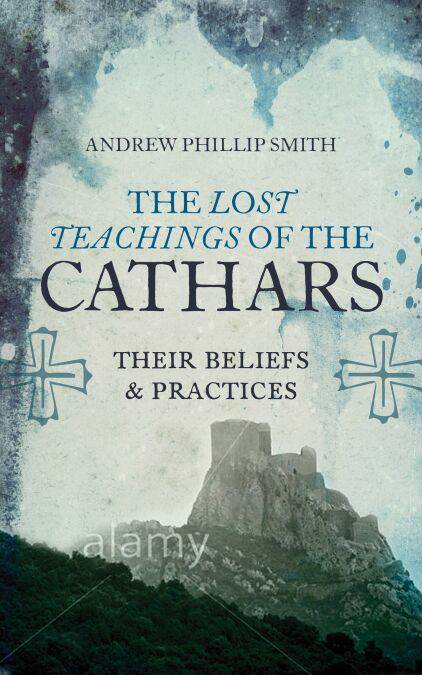
- Retrait gratuit dans votre magasin Club
- 7.000.000 titres dans notre catalogue
- Payer en toute sécurité
- Toujours un magasin près de chez vous
- Retrait gratuit dans votre magasin Club
- 7.000.0000 titres dans notre catalogue
- Payer en toute sécurité
- Toujours un magasin près de chez vous
The Lost Teachings of the Cathars EBOOK
Their Beliefs and Practices
Andrew Phillip Smith
Ebook | Anglais
16,71 €
+ 16 points
Format
Description
A deep-dive into the history, culture, and legacy of the medieval Christian dualist movement, Catharism—as seen in popular novels by Dan Brown and Kate Mosse
Centuries after the brutal slaughter of the Cathars by papally endorsed Northern French forces, and their suppression by the Inquisition, the medieval Cathars continue to exert a powerful influence on both popular culture and spiritual seekers. Yet few people know anything of the beliefs of the Cathars beyond vague notions that they believed in reincarnation, were vegetarians, were somehow Gnostic, and had some relation to Mary Magdalene. The Lost Teachings of the Cathars explores the history of this Christian dualist movement between the twelfth and fourteenth centuries, offering a sympathetic yet critical examination of its beliefs and practices.
In addition to investigating the Cathars’ origin, their relationship to Gnosticism, and their possible survival of the Inquisition, author Andrew Philip Smith also addresses theories and figures from the Cathars’ recent past. Eccentric esotericists initiated a neo-Cathar revival in the Languedoc which inspired the philosopher Simone Weil. The German Otto Rahn—the real-life Indiana Jones—believed that the Cathars were protectors of the Holy Grail and received support from Heinrich Himmler. Meanwhile, English psychiatrist Arthur Guirdham became convinced that he and a circle of patients had all been Cathars in previous lives.
Tourists flock to the Languedoc to visit Cathar country. Bestsellers such as Kate Mosse’ timeslip novel Labyrinth continue to fascinate readers. But what did the Cathars really believe and practice?
Centuries after the brutal slaughter of the Cathars by papally endorsed Northern French forces, and their suppression by the Inquisition, the medieval Cathars continue to exert a powerful influence on both popular culture and spiritual seekers. Yet few people know anything of the beliefs of the Cathars beyond vague notions that they believed in reincarnation, were vegetarians, were somehow Gnostic, and had some relation to Mary Magdalene. The Lost Teachings of the Cathars explores the history of this Christian dualist movement between the twelfth and fourteenth centuries, offering a sympathetic yet critical examination of its beliefs and practices.
In addition to investigating the Cathars’ origin, their relationship to Gnosticism, and their possible survival of the Inquisition, author Andrew Philip Smith also addresses theories and figures from the Cathars’ recent past. Eccentric esotericists initiated a neo-Cathar revival in the Languedoc which inspired the philosopher Simone Weil. The German Otto Rahn—the real-life Indiana Jones—believed that the Cathars were protectors of the Holy Grail and received support from Heinrich Himmler. Meanwhile, English psychiatrist Arthur Guirdham became convinced that he and a circle of patients had all been Cathars in previous lives.
Tourists flock to the Languedoc to visit Cathar country. Bestsellers such as Kate Mosse’ timeslip novel Labyrinth continue to fascinate readers. But what did the Cathars really believe and practice?
Spécifications
Parties prenantes
- Auteur(s) :
- Editeur:
Contenu
- Nombre de pages :
- 256
- Langue:
- Anglais
Caractéristiques
- EAN:
- 9781780288048
- Date de parution :
- 23-11-15
- Format:
- Ebook
- Protection digitale:
- Adobe DRM
- Format numérique:
- ePub

Les avis
Nous publions uniquement les avis qui respectent les conditions requises. Consultez nos conditions pour les avis.






